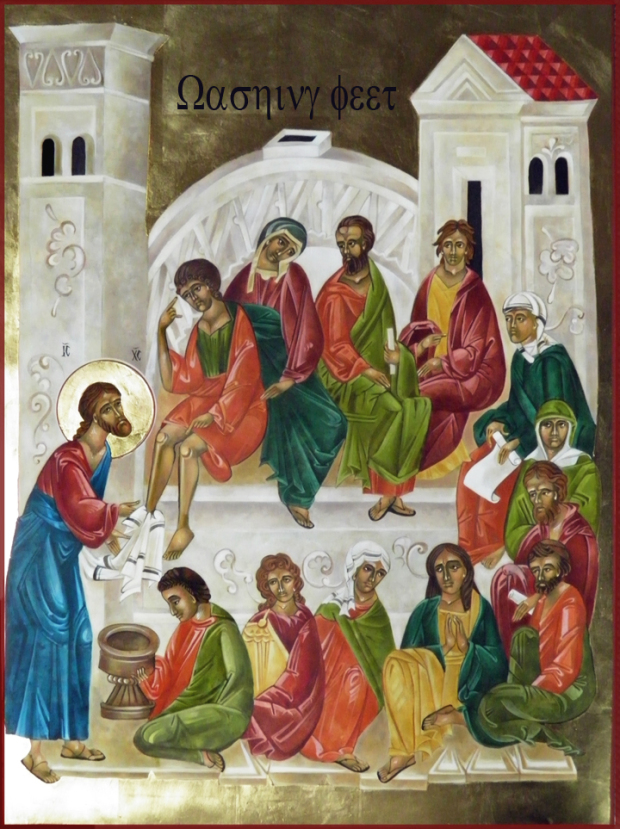
by Mary Jane Miller
Mary Jane Miller is an icon artist with over 25 years of experience. Her work has been exhibited in galleries, museums and churches in both the United States and Mexico, most recently featured in the Museum of Sacred Art in Querétaro. Here she reflects on the role of women in the church and in her work
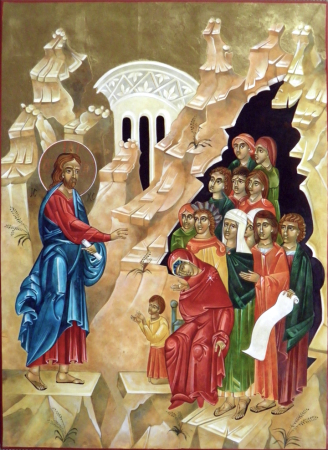
Why are so few women mentioned in the great feast days like Pentecost, the Last Supper, and the Baptism of Christ? God made no commandment that they not be included. Inquisitive women have always been around Christ listening to His message. There they were, cooking and cleaning at the Last Supper, at the wedding at Cana, and probably when He fed the five thousand too. When Christ invited the children to come to him, you can also be sure the mothers were there.
Beginning as early as the fourth century, the dominant Christian leaders – all men – twisted and distorted Holy Scriptures to thwart the ascendant positions for women within the religious hierarchy and in Christian societies generally. Yet, the underlying teachings of Jesus Christ, the Apostle Paul, Moses and the prophets, – call for the proper and equitable treatment of all God’s children. Without a doubt, God and Christ love all of humankind with no gender bias. When women listen to scripture we naturally fill in the gap, or adjust the gap knowing in our hearts and souls, we are not inferior to men.
Two millennia ago, society was primarily male dominated. While women were present and valued in the home, they were delegated publicly to submissive roles.
We don’t need to live like that anymore. It may be time for those in authority to redesign sacred text to eliminate harsh and unnecessary teachings concerning the debasement of women. Such as the verse that says; “Women should remain silent in the churches. They are not allowed to speak…” (Corinthians 14:34). The words are insulting! If we believe that God’s boundless presence is reflected through sacred text and the iconic images which portray them, then the still unrecognized “New Eve” can and should live in communion with the “New Adam” to offset the gender imbalance in science, art, government, religion and all other facets of life.
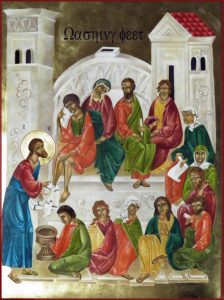
In Light of Women is a collection of icons to I’ve created to recognize and honor women who speak, contemplate, teach, heal, administer, and, have wisdom. They have always been living and walking among us. While I am painting new images of women in iconography, I am challenging the Christian church to re-frame parts of the tradition which have justified the superiority of men over women. In the language of iconography, Mary has been held in the highest esteem, for her silence and absolute obedience. The church acclaims her to be the vehicle for contemplation through service, surrender and acceptance. The delicate line painted through her neck is there to remind us of her deep silence and constant meditation.
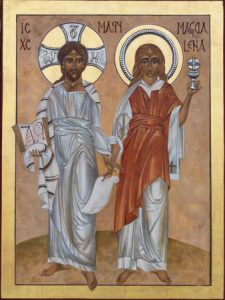
There are more Icons of Mother Mary than any other subject. She is considered the ideal woman but unfortunately displays unobtainable saintly qualities which no woman can ever match. (Men cannot match those given to Jesus either of course, but it has some overlay to this discussion). Theologians of the Middle Ages deliberated in detail the Forever Virgin condition of Mary. They had to create and answer the doctrine to address how it could be that Christ was born to someone as common as one of us. Since Christ is all man and all God, His mother would have to be, in some way, all divine. The Roman Catholic Church finally fashioned the idea of the Immaculate Conception. This theological creation became dogma in 1854 at considerable expense to women. Ironically, Mary was then lifted to the highest place among men, yet somehow, though she was seemingly divine, she had no voice and no ability to act in any other way but constant surrender. The Roman Catholic institution needed an example of undefiled sexuality, perfected womanhood, with divine meekness and they created it in the Virgin Mary.
Now ironically, women may be holding the means for how sacred iconography will survive. Two hundred years ago women could not paint icons but today those who are graced with the desire to paint sacred text have an obligation, as prayer practitioners, to re-examine how or why women are not mentioned in the great feast days, nor heard of in text or seen in sacred image. When the feminine voice and new icon images are ushered into today’s church communities, the addition will benefit us all.
The visual language of the sacred art of iconography has cultivated my own rebellious spirit. With my book I wanted to address the possibility of a new attitude: that women can stand equally beside men in a more contemporary vision of the world. Christ’s teachings regarded women in a variety of roles and the consequences of editing them out of theology has hurt everyone. While I am deeply respectful of the iconography tradition and knowledgeable of its long history, I want my book to challenge the male-dominated church landscape of today’s theology.
I am not a heretic, I am not even rebellious really, I am asking for a simple review to rectify what we all are beginning to see as misguided behavior of the past that must change if we are to have a thriving church in the future. Heretics are largely called heretics because they question the authority of our accepted norms. Am I one? During the inquisition one million named heretics were murdered for thinking differently; hopefully we are past burning witches.
Tolerance and open discussion throughout society makes change possible. World leaders have recently published a statement that declares: “The justification of discrimination against women and girls on grounds of religion or tradition, as if it were prescribed by a Higher Authority, is unacceptable.”
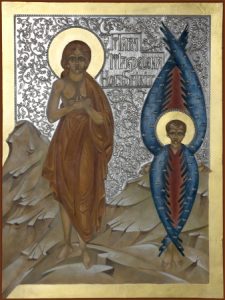
While I paint, I wait for the church “fathers” to draft a similar statement.
Mary Jane Miller is a self-taught icon painter with over 25 years of experience. Her work has been exhibited in galleries, museums and churches in both the United States and Mexico, most recently featured in the Museum of Sacred Art in Querétaro. She is the author of three self-published books including Icon Painting Revealed, The Mary Collection and now In Light of Women. She has been published online and in publications such as Divine Temple Russian Orthodox Journal and Faith and Forum Magazine. Her website is www.sanmiguelicons.com and her icons can also be found at millericons.com

